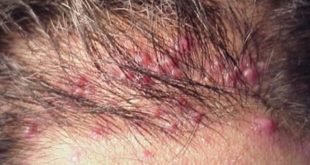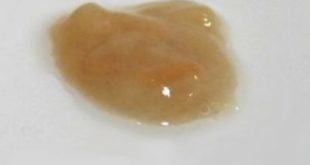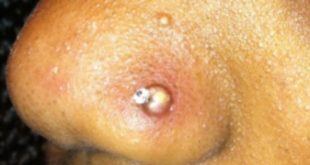A rash behind the ear should not be ignored at all. The possible causes ought to be examined and treatment be administered immediately. As with most rashes, it can appear red, swollen, and irritated before it becomes a blister or open sore. Rashes not only appear behind the ear but can be also appear on the chest, on the neck, on cheeks, scalp, face, body.
Rash behind ear meaning
Contents
A rash is an inflammatory response that causes changes to your skin, such as redness, itching, blistering, or scaly or raised skin patches. A rash of any kind can be annoying, painful, and embarrassing. However, when it comes to a rash behind the ear, it can be a cause for concern. Usually stemming from the head or neck region, a rash behind the ears occurs when moisture sets into the folds of the skin.
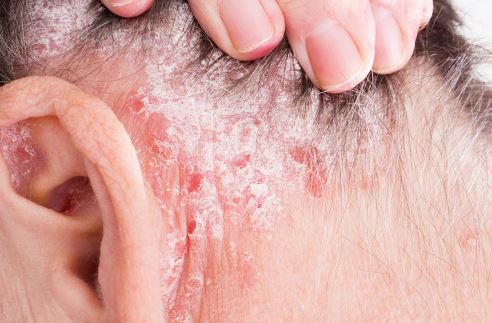
A rash behind ear can sometimes go unnoticed unless it develops into an itchy or painful rash. It’s important to always maintain good hygiene by keeping the area clean and dry to prevent a rash from forming.
Causes of rash behind ear
Rashes develop when the skin is irritated by allergic reactions to bacteria, viruses, foods, metals, and other factors. It is therefore good to know the different types of rashes, their causes and respective remedies and treatment.
SEE ALSO:
- Pain behind ears – causes and treatment
- Why are my ears draining?
- Home remedies for an itchy ear canal
There are many skin disorders that cause a rash behind the ear, as well as environmental conditions such as the weather (heat, sun, cold, and wind). Infections in the body region of the head can be a factor, as can genetics and allergies. These are the five main causes of a rash behind the ear.
1. Swollen lymph node
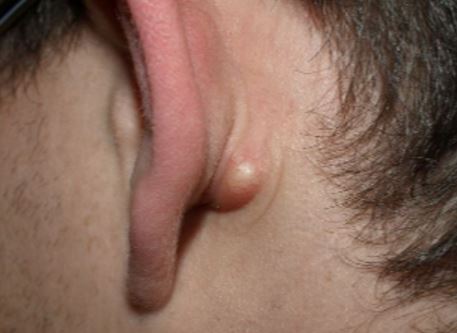
A rash behind the ear is caused by swollen lymph nodes. The swelling is caused by an infection called rubella, the glands will usually swell behind the ears, below your skull at the back of your head, and in your neck.
In some cases this swelling can be painful. These lymph glands sometimes start to swell before the rash appears behind ears, and the swelling can last for several weeks after the rash has gone.
2. Fungal infection
A rash behind the ear is caused by fungal infections that feed on the protein that are found on the outer layers of the skin. This fungal infections may cause rashes on the skin behind the ear. This are the fungal infections that cause ringworms on the skin.
Moreover, some bacterial infections though not all causes rashes on the skin. The rashes from bacterial infections are swollen, bumpy, painful and dangerous to the skin like that behind the ear. Therefore this infections should be treated with a lot of care and good hygiene should be encouraged.
3. Shingles
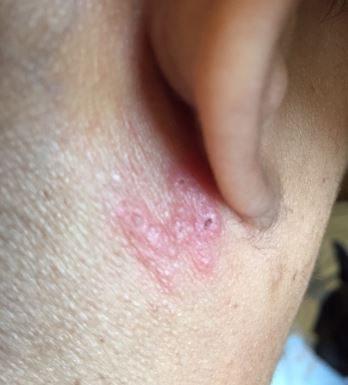
Shingles is an infection by the herpes zoster virus, which also causes chicken pox. This happens in people who have had chicken pox and the virus present in the nerve reactivates later on in life. Shingles causes a painful rash on one side of your body and can affect your ears. The virus infects the facial nerve which supplies the face muscles. This will result in a rash around your ears and facial paralysis, among other symptoms.
Furthermore, this condition begins with a red and very painful rash on your eardrum. As per Mayo Clinic, blisters accompany it on your outer ear, ear canal, eardrum, mouth and neck. These blisters may ooze and exude a watery discharge.
4. Teething in babies
Teething is generally associated with gum and jaw discomfort as the infant’s tooth prepares to erupt through the gum surface. As the tooth moves beneath the surface of the gum tissue, the area may appear slightly red or swollen. Sometimes a fluid-filled area similar to a “blood blister” may be seen over the erupting tooth.
Some teeth may be more sensitive than others when they erupt. The larger molars may cause more discomfort due to their larger surface area that can’t “slice” through the gum tissue as an erupting incisor is capable of doing. With the exception of the eruption of the third molars, eruption of permanent teeth rarely cause the discomfort associated with eruption of primary or deciduous teeth.
Teething may cause a mild rash around the mouth due to skin irritation secondary to excessive drooling. The irritation may also cause rubbing of the cheek or the skin the surface around the ear. This may affect the skin around and even cause a rash behind the ear.
Other causes of rash behind ear
Other possible causes of a rash behind the ear include:
1. Atopic dermatitis
It is commonly known as eczema, it appears as dry, itchy skin that once inflamed, becomes red and swollen. If not treated, it can become a cluster of blisters. Known to affect mainly young children, this skin rash can also be a problem for adults, typically behind the ears, and in the folds of the elbows and knees.
2. Contact dermatitis
This infection is sometimes confused with atopic dermatitis, as it also appears as a red, swollen, itchy rash on dry, rough skin. The main difference is that contact dermatitis is usually caused by contact with an allergen. People of all ages can develop this type of ear rash, depending on their reaction to substances such a shampoo, soap, cosmetics, jewelry, and cleaning chemicals
3. Seborrheic dermatitis
It is yet another chronic skin condition that first appears on the scalp before spreading to behind ear and on face. A crusty yellowish color, it can be an itchy, greasy, scaly rash. It can also be present in babies as cradle cap and as dandruff in young people and adults.
The exact cause is not known, but it is associated with low-functioning immune systems, a reaction to the skin’s natural occurring yeasts, and an excessive intake of vitamin A. It also has been suggested that a diet lacking in zinc, riboflavin, biotin, and pyridoxine may trigger seborrheic dermatitis.
4. Scalp psoriasis
This is an extension of the chronic skin condition, psoriasis. While psoriasis is concentrated on the elbows, knees and scalp, scalp psoriasis covers the forehead, neck and behind the ears. Usually, the skin can be shiny and smooth, or appear red and scaly with an itchy surface.
However, with atypical psoriasis, neither of these apply. The rash can be reoccurring. Thought to be an autoimmune disease, genetic and environmental factors tend to play a role, but the cause of scalp psoriasis is not known.
5. Skin infections
Skin infections can cause rash behind the ears, primarily the common tinea capitis and impetigo. Tinea capitis infection, or scalp ringworm, is caused by a type of fungi known as dermatophytes. It can appear anywhere on the body, with main areas being the scalp, feet, and groin regions. It’s a superficial infection that presents as a dry, scaly, red rash that is itchy and forms circles.
Impetigo skin infections are contagious and can be very painful red, swollen blisters that stem from cuts in the skin. It is usually caused by the bacteria staphylococci, but other bacteria forms may be involved. This superficial infection can lead to serious conditions if not treated.
Bumpy, itchy rash behind ear, neck and chest
A bumpy rash behind ear in children or grown-ups may be caused by several factors. This may vary from a simple allergic reaction to other serious underlying viral diseases in the body. They may be itchy or bumpy depending on the cause. There are cases were the rashes behind the ear spread to the neck, cheeks. Sometimes they appear behind the ear and also in other parts of the body as well.
On the other hand, the skin all over the surface of the body is largely the same in structure and it is continuous. Therefore skin conditions can occur anywhere in the body. Some problems are more likely to affect certain areas more than others, like acne which more often occurs on the face, neck, back and chest.
While most of us are used to seeing rashes on most parts of the body, a skin rash behind the ear is often considered to be unusual. But it can occur and there are certain skin conditions more likely to afflict the skin behind the ears.
Red rash behind ears in babies and toddlers
A newborn baby is prone to all sorts of rashes. It’s therefore normal for toddlers and new born babies as early as few days after birth to develop rashes on the skin, as their sensitive skin adapts to different environmental conditions. Most of these rashes are harmless and disappear on their on their own just after a few days.
A rash in Newborn babies and toddlers is cause by diseases such as measles, meningitis, and chicken pox. This infections cause the formation of red rash behind ears in toddlers and also new born babies.
Measles begins like a bad cold and cough with sore, watery eyes. Due to this infection, the child will become gradually more unwell, with a fever. A rash appears after the third or fourth day. The spots are red and slightly raised. They may be blotchy, but not itchy.
The measles rash usually starts behind the ears as flat red spots and then travels down the rest of the body. Measles actually is a respiratory infection, though its most common symptoms are red spots on the skin. Other signs of the disease include a fever, runny nose and cough.
Chickenpox is a mild infectious disease that most children catch at some time. It starts with feeling unwell, a rash and, usually, a fever. Spots develop, which are red and become fluid-filled blisters within a day or two. They eventually dry into scabs, which drop off. The spots first appear on the chest, back, head or neck, then spread. They don’t leave scars unless they’re badly infected or picked.
Treatment for rash behind ear
A rash behind the ear ought to be treated once it has been identified because some rashes might be as a result of a severe condition. We can get rid of the rash behind ear by the use of home remedies or by use of antibiotics from a Doctor.
Home Remedy of rashes behind the ear
Home remedies can be effective in the treatment of a rash behind ear. However, in most cases, home remedies should be done after consulting a doctor for a proper diagnosis. When it comes to rashes, avoid treating them at home. They may be related symptoms to serious underlying diseases in the body.
1. Using a thin fiber wash cloth on rash caused by seborrheic dermatitis
A thin fiber wash cloth should be used to wash the infected area every day.
- Make the ear wet first to help in making the crust and scale soft
- Press in the folds and crease behind the ear using the dump thin fiber wash cloth
- Vigorously scrub the crust and the scales on the skin away using the fiber cloth
- Pat dry with a clean towel and apply medicated cream
2. Cool damp wash cloth
This generally helps in easing the irritation and relives the itching. It also cools down fever which promotes irritation on the affected area.
3. Clothing
Dress the baby in clothes made of materials that can absorb sweat and are made of natural fibers like cotton. This helps a lot in keeping the skin naturally moisture and helps a lot in avoiding irritation of the rashes.
4. Nails and hygiene
Cutting baby nails to keep them short and clean. Keeping short nails help especially for children. Children will tend to scratch the irritation since it is the only solution they have when irritated. When they scratch the rashes, it will only open them up leading to more infections. Chances are that kid’s nails are also dirty and should be kept short for proper hygiene.
It is important to keep the area behind the ear clean and dry. This helps to keep away bacterial and fungal infections.
5. Detergents and skin care products
Detergents and skin care products may cause allergic reactions on the skin surface. Once the rashes are noted to have been caused by allergens, resort to using mild detergents and skin care products that contain less chemicals or no chemicals to avoid further infections.
Try using natural hair dye if you notice rashes after using the once with chemicals. Incases were one reacts to earrings and jewelries, stop using them until the rashes clear up.
6. Tree oil remedy
According to Keeper of the Home, “Tea tree oil is known for its topical antiseptic and anti-fungal treatment or infection-reducing benefits. It also has antibiotic properties and helps aid against aliments such as skin infections, rashes, burns, dandruff and much more.”
If the rashes are caused from fungi, apply tea tree oil in its diluted form.
- Get a little amount of tree oil in a container
- Mix with olive oil in equal proportions
- Gently apply on the area and let it settle for some time
7. Turmeric paste
Turmeric paste is good when applied on rashes because of its inherent anti-inflammatory properties. This helps in reducing inflammation, swelling and redness of the rashes.
Treatment and medications
Rashes behind the ear or any other part of the body should not be taken lightly. Once the symptoms are well identified, consult a pediatrician or a doctor for the right diagnosis and treatment. Some rashes behind the ear only indicate the presence of other internal diseases that need urgent medical attention.
Viral rash behind ear can be treated by oral antibiotics or antibiotic cream
1. Antibiotic creams
This may be applied on the affected area after the exact cause has been identified by the doctor. They should not be bought over the counter since they need to be applied as per medical advice.
2. Antihistamine
Helps a lot in regulating the swelling and itching of the rashes behind the ear. The doctors only administer this depending on the cause of the rash behind the ear
3. Calamine lotion
This can also help in reliving the itching rashes. Itching especially in baby’s causes a lot of discomfort since this alone can make them cry all the time.
4. Pills and oral injections
This are mostly administered by qualified doctors on serious or advanced skin rash infections. The doctors will prescribe this according the nature of the rashes. Some rashes spread from behind the ears to other parts of the body. While some appear behind the ears and other parts of the body at the same time.
5. Medicated soap or shampoo with zinc pyrithione
According to Dr. Cynthia Bailey, Soaps or shampoos with zinc pyrithione give great results when used on rashes. Especially in people with seborrheic dermatitis. A good example is Calming zinc soap
It has a maximum level for zinc pyrithione with an added advantage in that it does not leave your skin dry or irritating due to its hydrating and soothing properties.
6. Cetirizine
This is best used on rashes that are formed from ear piercings. According to Dr. Pavan Kumar a general and family physician based in New Delhi India, Cetirizine is good for fighting fungal infections but should be used only after a doctor’s checkup.
References and sources
- NHS Choices:
- Health MDS:
- Keeper of the Home:
